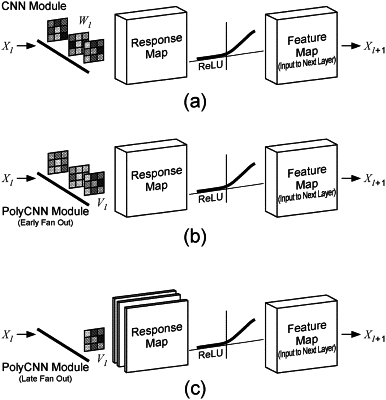| CPC G06V 10/82 (2022.01) [G06F 18/21 (2023.01); G06F 18/21355 (2023.01); G06F 18/2414 (2023.01); G06F 18/253 (2023.01); G06N 3/045 (2023.01); G06N 3/048 (2023.01); G06N 3/08 (2013.01); G06N 3/084 (2013.01); G06V 10/454 (2022.01)] | 9 Claims |

|
1. A method for training a neural network comprising, for each convolution layer in the neural network:
receiving a gradient function;
adjusting a seed convolutional filter based on the gradient function;
generating a plurality of augmented convolutional filters, wherein each weight of each augmented convolutional filter is generated by applying a polynomial to one or more weights of the seed convolutional filter;
receiving an input;
generating a plurality of response maps based on convolutions of the input with the seed convolutional filter and each of the plurality of augmented convolutional filters; and
generating a feature map based on the plurality of response maps.
|